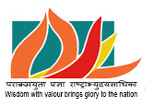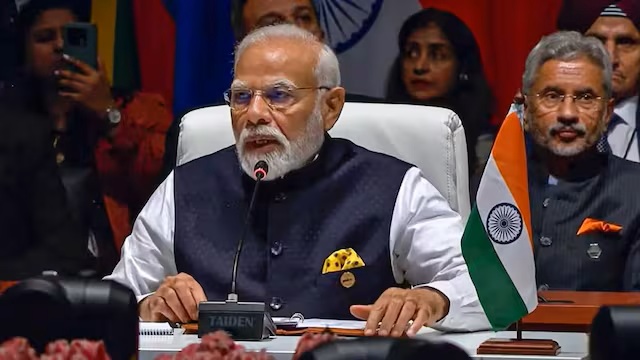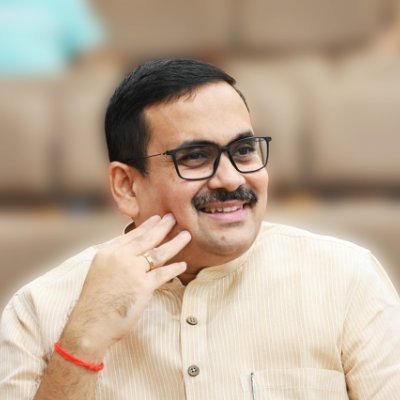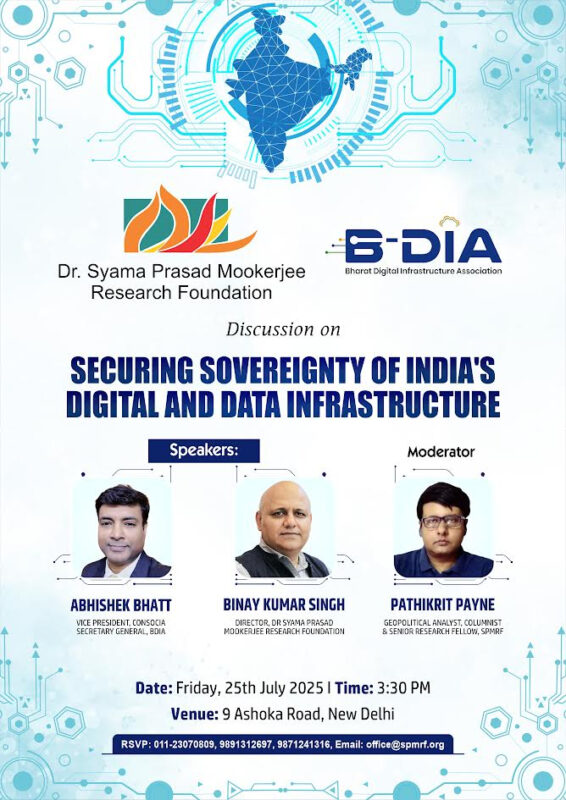The Modi Doctrine does not speak of India’s prosperity and progress alone; it advocates shared prosperity and a shared future
Prime Minister Narendra Modi’s recently concluded foreign tour, from July 2 to 9, covering two continents and five nations, was the longest such trip undertaken in ten years. The pace was unchanged. It was relentless and focused on realising India’s strategic and national interest goals. Apart from the many gains it made for India and for her global partnerships at many levels, this trip was crucial and symbolic on an important count. It served to reiterate and crystallise the philosophy and vision of the “Global South”, consistently articulated by PM Modi over the last five years.
Pursuing India’s strategic and foreign policy goals and articulating a vision for a new global discourse and paradigm went hand in hand during PM Modi’s interactions and addresses on this long tour. The hard interests and dealings were not neglected. In fact, under Modi in the last decade, they have never been given up or jettisoned, while the deeper vision that can effectuate a global shift and change in the emerging new order was also stated through PM Modi’s emphasis on the “Global South” paradigm.
Pandit Deendayal Upadhyaya’s thoughts on India’s foreign policy principles come to mind in this context. In a sharp analysis of the dominant paradigm of India’s foreign policy in the Nehru era, he articulated what could be said to be the driving goal of a nation’s foreign policy: “It must be borne in mind,” Upadhyaya wrote, “that foreign policy is always a matter of policy and not one of principle. Protection and promotion of national interests is the principle which determines its formulation. So, when anyone insists on it with a vehemence that implies a secondary place of consideration for national interests, he errs.” (Alignment vs Non-alignment, July 18, 1960)
In the last decade, PM Modi has retrieved Indian diplomacy from this mindset which saw national interest as a secondary concern. He has made national interest the driving force and the touchstone of India’s diplomacy.
“Protection and promotion of national interests” has become the primary focus of India’s diplomacy under PM Modi. It is, as we argued in our assessment of PM Modi’s foreign policy in 2016, just two years after he assumed office, the foundational pillar of the “Modi Doctrine.” It signified a definite paradigm shift from Panchsheel to Panchamrit. Jawaharlal Nehru’s Panchsheel was not backed by force and conviction; it was driven by defenseless pacifism.
Modi’s Panchamrit is backed by strength, is dynamic and aims to see India emerge as a major power — a power that matters. It is the foundation of PM Modi’s diplomacy. PM Modi’s Panchamrit foreign policy, as we had argued, stands on five pillars: Samman (dignity and honour), Samvad (greater engagement and dialogue), Samriddhi (shared prosperity, Suraksha (regional and global security), Sanskriti evam Sabhyata (cultural and civilisational linkages). It is a crystallised foreign policy doctrine and has had an effect and visibility on the ground.
Let us look at some of these dimensions. Operation Sindoor reiterated PM Modi’s commitment to the “Suraksha” dimension. Surgical strikes in response to the Uri terror attack in September 2016, Pulwama in 2019, and Pahalgam in 2025 have seen a quantum leap in technique and resolve. The ability and willingness to strike — as distinct from the strike itself — had left the world watching. No country disputed India’s right to strike to safeguard her security imperatives. It displayed the effectiveness of the Suraksha dimension and the commitment to it in the Modi Doctrine-driven foreign policy.
The Suraksha dimension has been clearly visible in India’s response to Chinese adventurism in Doklam and Galwan. India dug in her heels and held her ground. Eventually, Samvad over the last few years, held on India’s terms, has seen a movement forward on the China front. The resumption of the Kailas Mansarovar Yatra is one of the signs of that renewed momentum.
The emphasis on Suraksha in the Modi Doctrine is also visible in India’s determined and persistent stand that terrorism and its sources need to be called out globally. Prime Minister Modi’s unambiguous stand on international forums has elicited wide global support. His emphasis that condemnation of terrorism “must be our principle, not a mere convenience” at the recently held BRICS summit received endorsement. The Rio de Janeiro “Declaration – Strengthening Global South Cooperation for a More Inclusive and Sustainable Governance” came out strongly against the Pahalgam terror attack and spoke of combating terrorism in all forms, “including the cross-border movement of terrorists, terrorism financing and safe havens.” It also urged all members to ensure “zero tolerance for terrorism and reject double standards in countering terrorism.”
The Sanskriti and Sabhyata – cultural and civilisational linkages – dimension has been most visible of late in the mega “Dhammayatras” with Lord Buddha’s sacred relics, undertaken over the last few months in the Buddhist countries of Southeast Asia. After a massive congregation in Thailand in February 2024, the sacred relics Dhammayatra in Vietnam in May 2025 saw over 14 million people congregate across various cities and from neighbouring countries to venerate and worship. Never since Samrat Ashoka’s time has India undertaken such a civilisational Dhammayatra of such magnitude. With PM Modi’s personal involvement, in pursuit of the vision of the “Asian Century” inspired by the legacy and message of Buddha, such a Dhammayatra reflects India’s aspiration to renew special civilisational linkages and of her emergence as Viswamitra.
PM Modi’s visit to the sacred Jaya Sri Maha Bodhi Temple at Anuradhapura in April this year demonstrated the commitment in the Modi Doctrine to renewing and relaying civilisational and cultural linkages under a new rubric. These symbolise India’s commitment to relationships defined by compassion, prosperity, and possibilities — a commitment to partnerships that are beneficial and non-exploitative.
PM Modi’s vision of the “Global South” is driven by the essence of the Viswamitra narrative. The Modi Doctrine does not speak of India’s prosperity and progress alone; it advocates shared prosperity and a shared future. It envisages shared zones of prosperity. During his five-nation tour, PM Modi consistently spoke of the voice of the “Global South.” It was a tour that, among other things, further crystallised the “Global South” framework for engagement over the next decade. He had earlier defined its core philosophy when he argued that “Most of the global challenges have not been created by the Global South. But they affect us more” and that “the search for solutions also does not factor in our role or our voice.”
In this pan-continent tour, PM Modi reiterated this message of the need to search for global solutions by factoring in the role of the “Global South” — which is perhaps the most defining and future-oriented global narrative that can shape and influence the emerging new order. In the last decade, the narrative of the “Global South” is thus among the most crucial additions to the Modi Doctrine.
(The views expressed are the author's own and do not necessarily reflect the position of the organisation)



